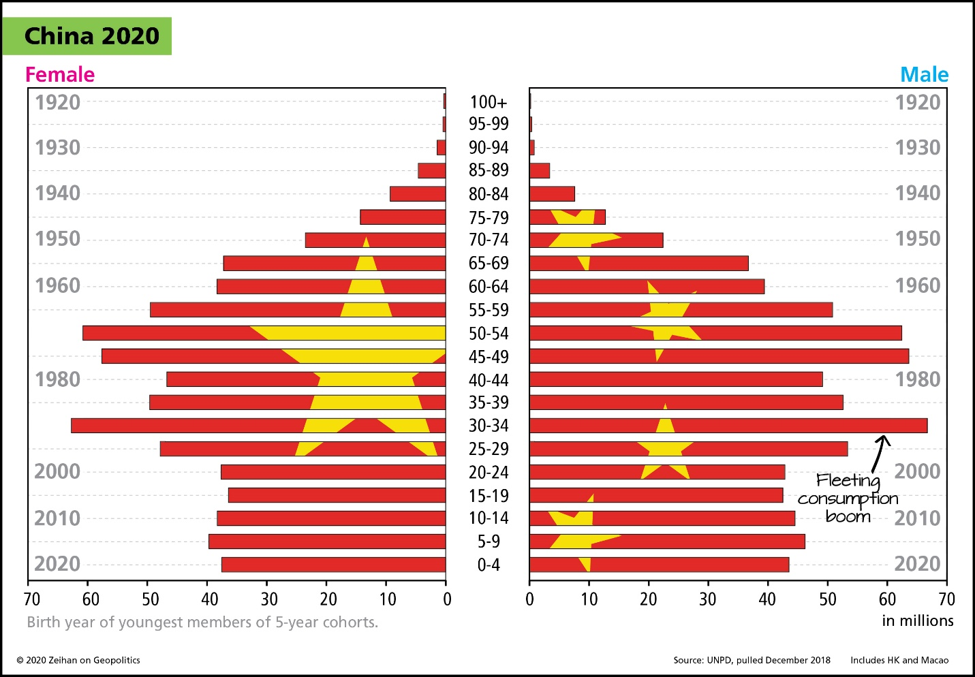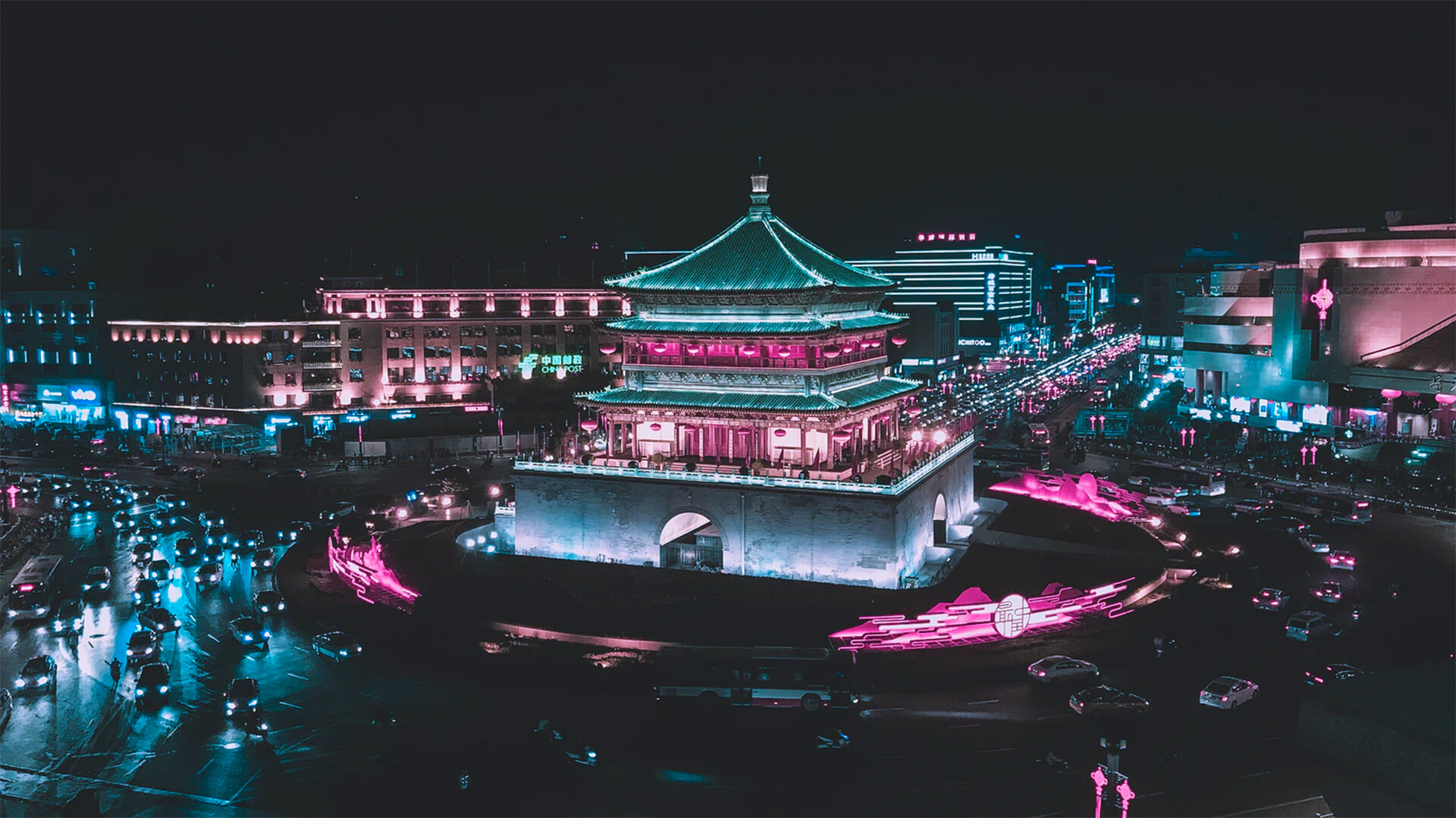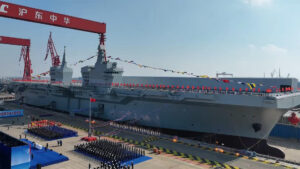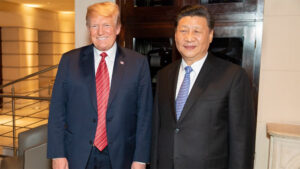The Chinese are intentionally torching their diplomatic relationships with the wider world. The question is why?
The short version is that China’s spasming belligerency is a sign not of confidence and strength, but instead insecurity and weakness. It is an exceedingly appropriate response to the pickle the Chinese find themselves in.
Some of these problems arose because of coronavirus, of course. Chinese trade has collapsed from both the supply and demand sides. In the first quarter of 2020 China experienced its first recession since the reinvention of the Chinese economy under Deng Xiaoping in 1979. Blame for this recession can be fully (and accurately) laid at the feet of China’s coronavirus epidemic. But in Q2 China’s recession is certain to continue because the virus’ spread worldwide means China’s export-led economy doesn’t have anyone to export to.
Nor are China’s recent economic problems limited to coronavirus. One of the first things someone living in a rapidly industrializing economy does once their standard of living increases is purchase a car, but car purchases in China started turning negative nearly two years before coronavirus reared its head.
Why the collapse even in what “should” be happening with the economy? It really comes down to China’s financial model. In the United States (and to a lesser degree, in most of the advanced world) money is an economic good. Something that has value in and of itself, and so it should be applied with a degree of forethought for how efficiently it can be mobilized. This is why banks require collateral and/or business plans before they’ll fund loans.
That’s totally not how it works in China. In China, money – capital, to be more technical – is considered a political good, and it only has value if it can be used to achieve political goals. Common concepts in the advanced world such as rates of return or profit margins simply don’t exist in China, especially for the state owned enterprises (of which there are many) and other favored corporate giants that act as pillars of the economy. Does this generate growth? Sure. Explosive growth? Absolutely. Provide anyone with a bottomless supply of zero (or even subzero) percent loans and of course they’ll be able to employ scads of people and produce tsunamis of products and wash away any and all competition.
This is why China’s economy didn’t slow despite sky-high commodity prices in the 2000s – bottomless lending means Chinese businesses are not price sensitive. This is why Chinese exporters were able to out-compete firms the world over in manufactured goods – bottomless lending enabled them to subsidize their sales. This is why Chinese firms have been able to take over entire industries such as cement and steel fabrication – bottomless lending means the Chinese don’t care about the costs of the inputs or the market conditions for the outputs. This is why the One Belt One Road program has been so far reaching – bottomless lending means the Chinese produce without regard for market, and so don’t get tweaky about dumping product globally, even in locales no one has ever felt the need to build road or rail links to. (I mean, come on, a rail line through a bunch of poor, nearly-marketless post-Soviet ‘Stans’ to dust-poor, absolutely-marketless Afghanistan? Seriously, what does the winner get?)
Investment decisions not driven by the concept of returns tend to add up. Conservatively, corporate debt in China is about 150% of GDP. That doesn’t count federal government debt, or provincial government debt, or local government debt. Nor does it involve the bond market, or non-standard borrowing such as LendingTree-like person-to-person programs, or shadow financing designed to evade even China’s hyper-lax financial regulatory authorities. It doesn’t even include US dollar-denominated debt that cropped up in those rare moments when Beijing took a few baby steps to address the debt issue and so firms sought funds from outside of China. With that sort of attitude towards capital, it shouldn’t come as much of a surprise that China’s stock markets are in essence gambling dens utterly disconnected from issues of supply and labor and markets and logistics and cashflow (and legality). Simply put, in China, debt levels simply are not perceived as an issue.
Until suddenly, catastrophically, they are.
As every country or sector or firm that has followed a similar growth-over-productivity model has discovered, throwing more and more money into the system generates less and less activity. China has undoubtedly past that point where the model generates reasonable outcomes. China’s economy roughly quadrupled in size since 2000, but its debt load has increased by a factor of twenty-four. Since the 2007-2009 financial crisis China has added something like 100% of GDP of new debt, for increasingly middling results.
But more important than high debt levels is that eventually, inevitably, economic reality forces a correction. If this correction happens soon enough, it only takes down a small sliver of the system (think Enron’s death). If the inefficiencies are allowed to fester and expand, they might take down a whole sector (think America’s dot.com bust in 2000). If the distortions get too large, they can spread to other sectors and trigger a broader recession (think America’s 2007 subprime-initiated financial crisis). If they become systemic they can bring down not only the economy, but the political system (think Indonesia’s 1998 government collapse).
It is worse than it sounds. The CCP has long presented the Chinese citizenry with a strict social contract: the CCP enjoys an absolute political monopoly in exchange for providing steadily increasing standards of living. That means no elections. That means no unsanctioned protests. That means never establishing an independent legal or court system which might challenge CCP whim. It means firmly and permanently defining “China’s” interests as those of the CCP.
It makes the system firm, but so very, very brittle. And it means that the CCP fears – reasonably and accurately – that when the piper arrives it will mean the fall of the Party. Knowing full well both that the model is unsustainable and that China’s incarnation of the model is already past the use-by date, the CCP has chosen not to reform the Chinese economy for fear of being consumed by its own population.
The only short-term patch is to quadruple down on the long-term debt-debt-debt strategy that the CCP already knows no longer works, a strategy it has already followed more aggressively and for longer than any country previous, both in absolute and relative terms. The top tier of the Chinese Communist Party (CCP) – and most certainly Xi himself – realize that means China’s inevitable “correction” will be far worse than anything that has happened in any recessionary period anywhere in the world in the past several decades.
And of course that’s not all. China faces plenty of other of issues that range from the strategically hobbling to the truly system-killing.
- China suffers from both poor soils and a drought-and-floodprone climatic geography. Its farmers can only keep China fed by applying five times the inputs of the global norm. This only works with, you guessed it, bottomless financing. So when China’s financial model inevitably fails, the country won’t simply suffer a subprime-style collapse in ever subsector simultaneously, it will face famine.
- The archipelagic nature of the East Asian geography fences China off from the wider world, making economic access to it impossible without the very specific American-maintained global security environment of the past few decades.
- China’s navy is largely designed around capturing a very specific bit of this First Island Chain, the island of Formosa (aka the country of Taiwan, aka the “rebellious Chinese province”). Problem is, China’s cruise-missile-heavy, short-range navy is utterly incapable of protecting China’s global supply chains, making China’s export-led economic model questionable at best.
- Nor is home consumption an option. Pushing four decades of the One Child Policy means China has not only gutted its population growth and made the transition to a consumption-led economy technically impossible, but has now gone so far to bring the entire concept of “China” into question in the long-term.

Honestly, this – all of this – only scratches the surface. For the long and the short of just how weak and, to be blunt, doomed China is, I refer you my new book, Disunited Nations. Chapters 2 through 4 break down what makes for successful powers, global and otherwise…and how China fails on a historically unprecedented scale on each and every measure.
But on with the story of the day:
These are the broader strategic and economic dislocations and fractures embedded in the Chinese system. That explains the “why” as to why the Chinese leadership is terrified of their future. But what about the “why now?” Why has Xi chosen this moment to institute a political lockdown? After all, none of these problems are new.
There are two explanations. First, exports in specific:
The One Child Policy means that China can never be a true consumption-led system, but China is hardly the only country facing that particular problem. The bulk of the world – ranging from Canada to Germany to Brazil to Japan to Korea to Iran to Italy – have experienced catastrophic baby busts at various times during the past half century. In nearly all cases, populations are no longer young, with many not even being middle-aged. For most of the developed world, mass retirement and complete consumption collapses aren’t simply inevitable, they’ll arrive within the next 48 months.
And that was before coronavirus gutted consumption on a global scale, presenting every export-oriented system with an existential crisis. Which means China, a country whose political functioning and social stability is predicated upon export-led growth, needs to find a new reason for the population to support the CCP’s very existence.
The second explanation for the “why now?” is the status of Chinese trade in general:
Remember way back when to the glossy time before coronavirus when the world was all tense about the Americans and Chinese launching off into a knock-down, drag-out trade war?
Back on January 15 everyone decided to take a breather. The Chinese committed to a rough doubling of imports of American products, plus efforts to tamp down rampant intellectual property theft and counterfeiting, in exchange for a mix of tariff suspensions and reductions. Announced with much fanfare, this “Phase I” deal was supposed to set the stage for a subsequent, far larger “Phase II” deal in which the Americans planned to convince the Chinese to fundamentally rework their regulatory, finance, legal and subsidy structures.
These are all things the Chinese never had any intention of carrying out. All the concessions the Americans imagined are wound up in China’s debt-binge model. Granting them would unleash such massive economic, financial and political instability that the survival of the CCP itself would be called into question.
Any deal between any American administration and Beijing is only possible if the American administration first forces the issue. Pre-Trump, the last American administration to so force the issue was the W Bush administration at the height of the EP3 spy plane incident in mid-2001. Despite his faults, Donald Trump deserves credit for being the first president in the years since to expend political capital to compel the Chinese to the table.
But there’s more to a deal than its negotiation. There is also enforcement. In the utter absence of rule of law, enforcement requires even, unrelenting pressure akin to what the Americans did to the Soviets with Cold War era nuclear disarmament policy. No US administration has ever had the sort of bandwidth required to police a trade deal with a large, non-market economy. There are simply too many constantly moving pieces. The current American administration is particularly ill-suited to the task. The Trump administration’s tendency to tweet out a big announcement and then move on to the next shiny object means the Chinese discarded their “commitments” with confidence on the day they were made.
Which means the Sino-American trade relationship was always going to collapse, and the United States and China were always going to fall into acrimony. Coronavirus did the world a favor (or disfavor based upon where you stand) in delaying the degradation. In February and March the Chinese were under COVID’s heel and it was perfectly reasonable to give Beijing extra time. In April it was the Americans’ turn to be distracted.
Now, four months later, with the Americans emerging from their first coronavirus wave and edging back towards something that might at least rhyme with a shadow of normal, the bilateral relationship is coming back into focus – and it is obvious the Chinese deliberately and systematically lied to Trump. Such deception was pretty much baked in from the get-go. In part it is because the CCP has never been what I’d call an honest negotiating partner. In part it is because the CCP honestly doesn’t think the Chinese system can be reformed, particularly on issues such as rule of law. In part it is because the CCP honestly doesn’t think it could survive what the Americans want it to attempt. But in the current environment it all ends at the same place: I think we can all recall an example or three of how Trump responds when he feels personally aggrieved.
Which brings us to perhaps China’s most immediate problem. Nothing about the Chinese system – its political unity, its relative immunity from foreign threats, its ability import energy from a continent away, its ability to tap global markets to supply it with raw materials and markets to dump its products in, its ability to access the world beyond the First Island Chain – is possible without the global Order. And the global Order is not possible without America. No other country – no other coalition of countries – has the naval power to guarantee commercial shipments on the high seas. No commercial shipments, no trade. No trade, no export-led economies. No export-led economies…no China.
It isn’t so much that the Americans have always had the ability to destroy China in a day (although they have), but instead that it is only the Americans that could create the economic and strategic environment that has enabled China to survive as long as it has. Whether or not the proximate cause for the Chinese collapse is homegrown or imported from Washington is largely irrelevant to the uncaring winds of history, the point is that Xi believes the day is almost here.
Global consumption patterns have turned. China’s trade relations have turned. America’s politics have turned. And now, with the American-Chinese breach galloping into full view, Xi feels he has little choice but to prepare for the day everyone in the top ranks of the CCP always knew was coming: The day that China’s entire economic structure and strategic position crumbles. A full political lockdown is the only possible survival mechanism. So the “solution” is as dramatic as it is impactful:
Spawn so much international outcry that China experiences a nationalist reaction against everyone who is angry at China. Convince the Chinese population that nationalism is a suitable substitute for economic growth and security. And then use that nationalism to combat the inevitable domestic political firestorm when China doesn’t simply tank, but implodes.
With the world under COVID-related lockdowns, I’m pretty much as home-bound as everyone else. That’s nudged me to launch video conferences for interested parties on topics ranging from food safety to energy markets to the nature of the epidemic in the developing world.
On May 19 I’ll be doing a once around the world, laying out where we stand in the current crisis. Which countries are suffering most critically? Which are pulling ahead? What the shape of the pandemic will be in the weeks and months to come? What will the world look like once coronavirus is in our collective rear-view mirror? As with all the videoconferences, attendees will have the opportunity to submit questions during the event.
While most of these events are for a set fee, the May 19 event will be free of charge…which means it booked solid in less than a day. Fear not! We’ll be recording and posting it upon completion. First release will be via this newsletter list. If this was forwarded to you and you’d like to sign up yourself, you may do so here.
Newsletters from Zeihan on Geopolitics have always been and always will be free of charge. However, if you enjoy them or find them useful, please consider showing your appreciation via a donation to Feeding America. One of the biggest problems the United States faces at present is food dislocation: pre-COVID, nearly 40% of all foods were not consumed at home. Instead they were destined for places like restaurants and college dorms. Shifting the supply chain to grocery stores takes time and money, but people need food now. Some 23 million students used to be on school lunches, for example. That servicing has evaporated. Feeding America helps bridge the gap between America’s food supply (which remains robust) and its demand (which coronavirus has shifted faster than the supply chains can keep up).
A little goes a very long way. For a single dollar, FA can feed one person for three days.








